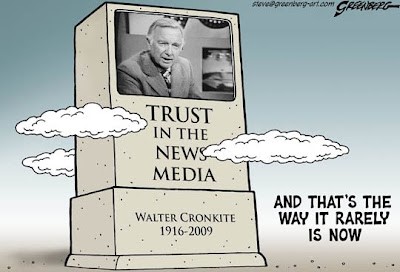Ned Buchbinder
55 years ago, my college classmate, Ned Buchbinder, saved me.
Ned always had a whimsical charm. With a Jewish background, he would remind his almost all Catholic classmates that the statue on the iconic Golden Dome at Notre Dame was a Jewish lady.
But in 1968, while the unwinnable war dragged on in Vietnam and I and all my classmates were about to lose our student deferments, the Selective Service Administration (it no longer exists as the draft no longer exists) was our next stop which meant one thing: we were likely to be drafted and fighting in the Mekong Delta in a matter of months. Many left the country; many went to Vietnam; too few came back and those that did were marked forever, often not in a good way.
Ned was what was then called a “draft counselor” which meant that he had mastered all of the rules in the Selective Service system. He found me a provision (unknown to me) that would allow me to remain a civilian in the United States rather than an infantryman in Vietnam. That provision was that a student who had been deferred could still qualify for a fatherhood deferment, but for the next 2 weeks only. For that, I have been eternally grateful.
So last week the very same Ned Buchbinder sent an email which just quoted Carl Sagan: “In all our searching, the only thing that we have found that makes existence bearable is each other.”
This got me thinking about the people we meet. Over the last week, I have been with three people who have made my life better.
Adwoa Bonsra
Last Thursday, I was at a physical therapy session with Adwoa Bonsra. Adwoa (pronounced ADJOA) was born in Ghana. At age 8, her father, who was in the United States, brought her to live with him. Initially, it did not go well. She was mercilessly teased by her classmates for being “African,” for her very dark skin and for her accent.
In any event, her father told her that she had three things going against her: she was African; she was black and she was a girl. That conversation apparently took. Thereafter, Adwoa regained her footing and there was no stopping her. She would be the Salutatorian of her very large high school class, receive her bachelor’s degree and then a Doctorate in Physical Therapy from the University of Maryland Medical School.
Today, Adwoa is as American as apple pie. She knows and quietly sings the lyrics of every song on the radio which is always playing in the therapy room but she still is from Ghana. She recently married Francis Boadi who is also from Ghana and has been in the United States for just a short time. They had a tribal wedding in Ghana which was then redone at a church here just so it would be “legal.”
Dr. Linh Nguyen
On Friday I went to see my podiatrist, Dr. Linh (pronounced LEAN) Nguyen in Jacksonville, Maryland. She is only here because a Japanese freighter picked up a floundering boat in the South China Sea in 1978.
The boat had been built under cover of darkness by her father and turned out to be not entirely seaworthy as water had to be constantly bailed. They had left Vietnam eight days before and were shortly out of food but, more importantly, water. She was 3 years old and one of 50 or so, mostly children, on the boat.
She and her extended family ended up in a refugee camp in Malaysia. Six months later, they were sponsored and settled in a Baltimore suburb. Her dad worked a variety of entry level jobs until he obtained sufficient education to locate a better position. Her mom was a manicurist until she retired.
As her time in high school was coming to an end, Dr. Linh, despite exemplary grades, was not thinking of college but rather thinking that she would like to be a stay at home Mom raising kids. There was only one problem with that thought process. She did not have anyone to marry. That would come later.
Ultimately, she received a bachelor’s degree from the University of Maryland and her medical degree from the Temple University Podiatric Medical School. Along the way, she met her husband and is the mother of three sons with a very active podiatric practice.
So Thursday and Friday were pretty interesting but then came Sunday.
Sister Laurentilla Back, SSND
The School Sisters of Notre Dame were founded in Bavaria in 1833. They take lifelong vows of poverty, celibacy and obedience, vows which most of us could not follow for any appreciable time at all. Their primary mission is to provide education at the elementary, secondary and college level.
They have always had a strong presence in Baltimore. One of their high schools (the Institute of Notre Dame just now closed) graduated former United States Senator Barbara Mikulski and House Speaker Nancy Pelosi.
Villa Assumpta is the local SSND Mother House in Baltimore and Mass is said there every Sunday at 10 AM. The typical congregation consists of 40 retired nuns and usually two men, me and the priest. Jesus said that he was leaving the Holy Spirit to guide his newly founded church. Apparently, The Holy Spirit is speaking more clearly to our Protestant brethren and some Jewish believers as the Catholic Church squanders the opportunity to have women conduct our masses. I know 40 women who would do a superb job.
In any event, the last person that I usually see on Sunday is Sister Laurentilla. She was introduced to me by Sister Dot Malone, SSND. Dot and I sit together in the back of the church, she in her electric wheelchair and me in my walker. Sister Laurentilla is 90 and has been a nun for 70 years. She is always joyous and welcoming.
She gave me a way to remember her name: think of Lauren Bacall (the actor Humphrey Bogart’s great love) and Attila the Hun and then put them together.
A pinch of salt usually makes food taste much better. So too there are people who make our lives better.
These are stories of perseverance and commitment. There are many other stories out there. There are stories of love gained and love lost; of chances taken and not taken; of triumphs and defeats, both small and large, and many others. All of these stories are worth repeating and sharing. All you have to do is to be a little nosey, talk a lot and ask many questions.
Then, just listen.











